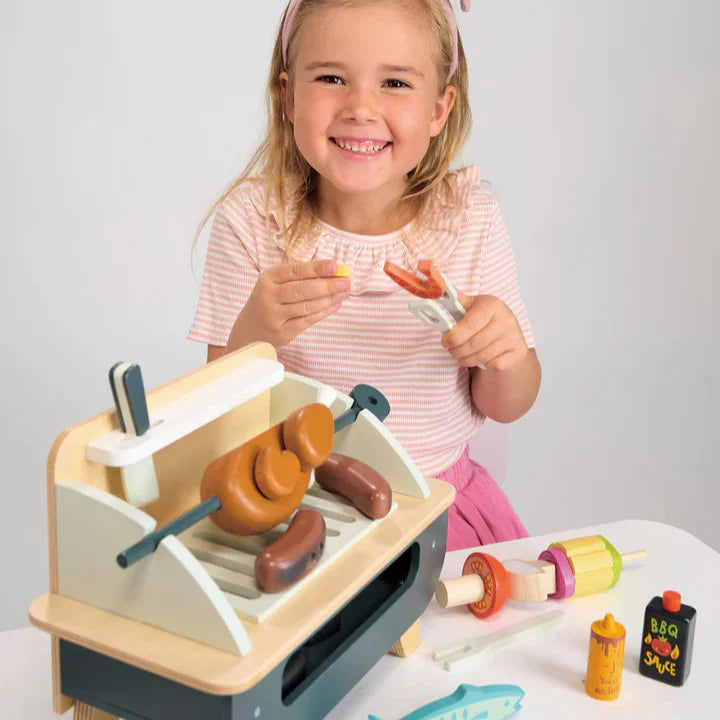Montessori & STEM: Why They’re a Perfect Match for Curious Kids
Share
"The goal of early childhood education should be to activate the child’s own natural desire to learn." — Maria Montessori
In the early years, children naturally explore the world around them with an incredible sense of wonder. This is where two powerful educational approaches beautifully intertwine: Montessori and STEM. Both value curiosity, hands-on exploration, and nurturing a lifelong love of learning.
At Curious Moonbeam, we believe these foundations help children become confident, creative thinkers who keep asking questions well beyond their early years. As one of my favourite tutors once said, we are lifelong learners, and it all begins with nurturing that spark in childhood.
What is STEM? And Why It Matters Early On
STEM stands for Science, Technology, Engineering, and Mathematics. While it might sound like a field for older students, introducing these concepts through play in early childhood is vital. STEM learning helps build:
- Critical thinking
- Problem-solving skills
- Creativity and innovation
- Curiosity about the natural and built world
Through simple, playful experiences, children begin to grasp the basics of cause and effect, patterns, experimentation, and persistence. Early STEM doesn't mean teaching advanced concepts — it means supporting a child's natural drive to explore.
How Montessori Philosophy Naturally Aligns with STEM
Montessori education and STEM are kindred spirits. Maria Montessori’s approach centres on the idea that children learn best through hands-on, self-directed experiences.
"The hands are the instruments of man's intelligence." — Maria Montessori
Montessori environments invite children to manipulate, build, sort, and explore materials independently — the very foundation of scientific inquiry. Both philosophies trust the child to be an active participant in their learning, emphasising discovery over rote memorisation.
In a Montessori setting, children naturally:
- Form hypotheses ("What happens if I pour this water here?")
- Test ideas through hands-on work
- Revise and learn from mistakes
- Build focus, concentration, and independence
Sound familiar? It’s the heart of scientific and mathematical thinking!
Montessori-Aligned STEM Activities for Young Children
You don’t need formal lessons to spark a love of science, maths, and discovery. In the Montessori approach, learning unfolds naturally through exploration — and many of our toys offer the perfect entry point into STEM concepts, without ever feeling forced.
Here are a few beautiful, hands-on ways to blend STEM learning into everyday play:
🍋 Wooden Citrus Fractions Puzzle
This juicy puzzle makes early maths concepts tangible. Children use the included knife to cut the citrus fruits into halves, quarters, and fifths - introducing fractions in a visual, hands-on way. With printed numbers underneath, it builds number sense, part-whole understanding, and fine motor skills. A playful foundation for mathematical thinking.
🦀 Coastal Creatures Wooden Stacking Display Set
A seaside twist on early biology, this stacking set features beautifully painted marine animals and a layered wooden shelf that mimics ocean depth. Children can sort, classify, and explore where each creature lives - fostering observation, sequencing, and curiosity about ocean ecosystems. A gentle introduction to life sciences that supports Montessori nature study.
🚀 Wooden Space Station STEM Busy Board
Blast off into imaginative STEM play with this richly detailed busy board. Young learners can twist knobs, move astronauts, spin gears, and explore the layout of a mini space station. Through tactile discovery, they build hand-eye coordination, learn cause and effect, and begin to grasp basic technology and engineering concepts - all while immersed in story-rich, open-ended play.
Planting the Seeds for Lifelong Learning
When children are encouraged to think independently, explore boldly, and follow their own curiosities, they are more likely to develop a love of learning that lasts a lifetime.
"The important thing is not to stop questioning. Curiosity has its own reason for existing." — Albert Einstein
Montessori classrooms don't rush children through information. Instead, they provide space for deep focus, repetition, and wonder. In the same way, early STEM experiences aren't about memorising facts; they're about nurturing questioning minds who aren't afraid to think differently.
As children grow, these foundational skills — problem-solving, independence, curiosity — become the tools they use to explore more complex scientific and mathematical ideas.
Bringing Montessori and STEM into Everyday Play
Supporting Montessori-aligned STEM learning at home can be beautifully simple. Here are a few ideas:
- Nature Walks: Observe insects, collect leaves, and talk about weather patterns.
- Building Forts: Engineering with cushions and chairs encourages spatial and structural thinking.
- Water Play: Experiment with floating, sinking, and volume.
- Open-ended Toys: Choose toys that encourage building, sequencing, and imaginative problem-solving.
Visit our Learn-Through-Play Essentials collection to find more inspiration.
"Education is not the learning of facts, but the training of the mind to think." — Albert Einstein
Everyday moments — stacking blocks, asking "why," or creating a new path for a marble — are powerful learning experiences when we step back and let curiosity lead.
Conclusion: A Lifelong Journey of Discovery
Montessori and STEM aren't separate paths. Together, they create a rich landscape where children learn to trust their hands, hearts, and minds as tools for exploration.
"Imagination does not become great until human beings, given the courage and the strength, use it to create." — Maria Montessori
At Curious Moonbeam, we celebrate the explorer in every child. By blending Montessori's wisdom with the wonder of STEM, we help plant seeds of curiosity that will blossom throughout life — because the journey of learning is endless, magical, and deeply human.


